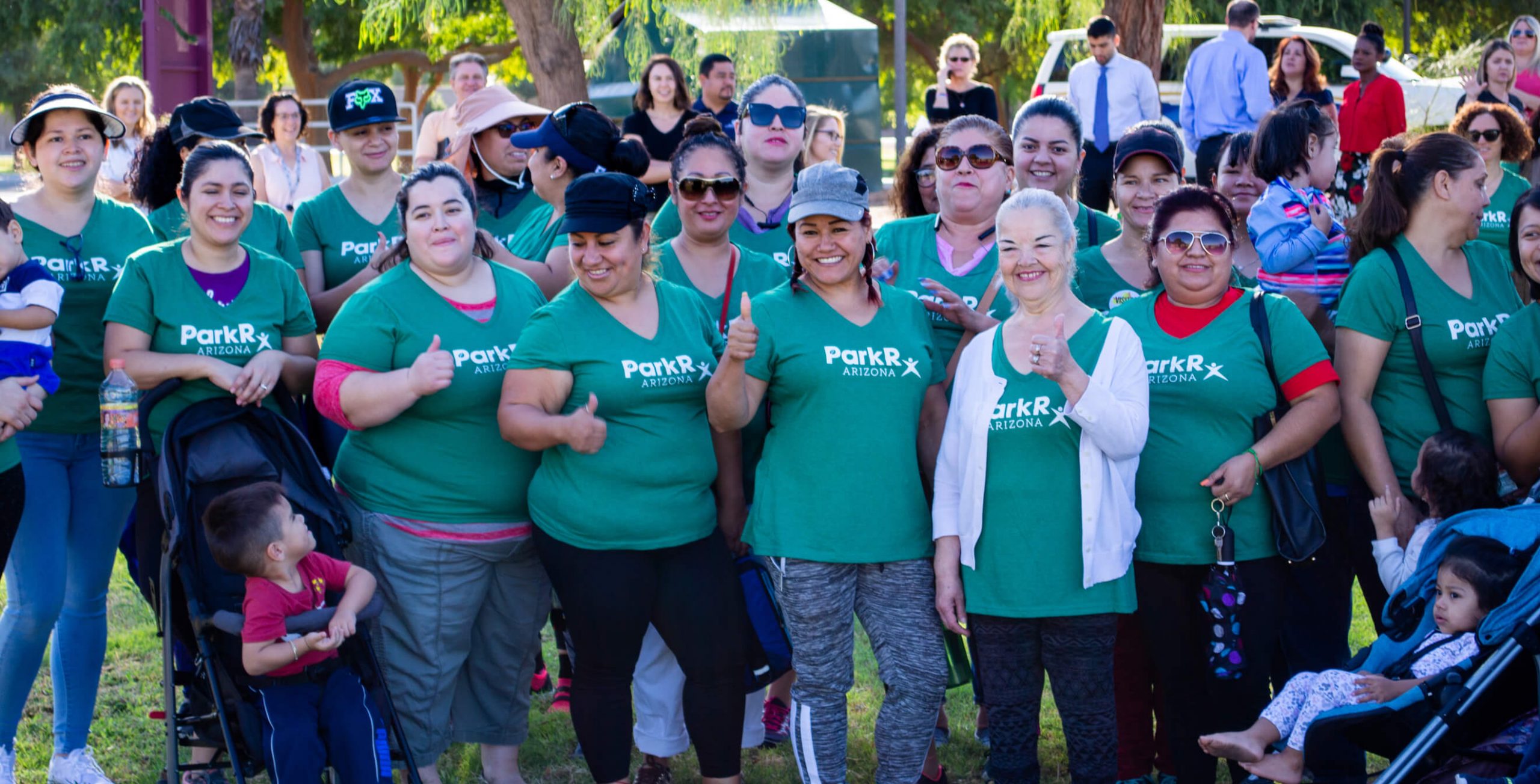New ParkRx pilot program has Arizona healthcare providers prescribing park time
By Elaina Verhoff
A study published last year in the International Journal of Environmental Health Research found that spending time in a park—even without exercising—has a measurable improvement in well-being. In fact, just 20 minutes in the park was found to result in an immediate and significant increase in life satisfaction.
So, what if Arizona health care providers were to improve patient health and well-being by prescribing park time? Thanks to a grant from Vitalyst Health Foundation
, a pilot program has been developed to do just that. The Arizona Community Tree Council recently received a $124,700 Innovation Grant from Vitalyst Health Foundation to implement a ParkRx pilot program that will encourage doctors and other care providers in two Phoenix communities to prescribe park time to patients and support park improvements, such as trees and benches.
Arizona Community Tree Council has been working with partners Maricopa County Department of Public Health; HonorHealth; I.G. Conchos Elementary School; City of Phoenix Departments of Parks & Recreation, Street Transportation, and Neighborhood Services; Arizona Department of Forestry & Fire Management; The Nature Conservancy; Keep Phoenix Beautiful, and other community members to identify park improvements, such as the addition of the Fit PHX walking course at Mountain View Park, and make recommendations to reduce barriers and improve access to the parks.
“The ParkRx program is taking a new approach to improving health by improving community parks and working with health care providers to use the power of the prescription pad to prescribe park time,” says Melanie Mitros, Vitalyst Health Foundation director of strategic community partnerships.
The Park Prescription movement began in October 2013, when the Institute at the Golden Gate and the National Recreation and Parks Association, with support from the National Park Service, convened a group of practitioners to discuss the emerging trend of prescribing nature to improve mental and physical health. As the movement has evolved, so have the needs of the community and the opportunities to support it.
Liza Oz-Golden, the community health planner at Maricopa County Department of Public Health, spearheaded the Maricopa ParkRx initiative, after attending a presentation at Arizona State University where she first learned about Tucson’s experience with the initiative.
“I was amazed and enlightened by this concept and saw a big opportunity to focus this approach on low-income communities. It can help address infrastructure in parks to reduce barriers that keep people from using these parks,” says Oz-Golden.
When asked why a program like this is needed, Beverly Babb, Arizona Community Tree Council executive director, explains that there has been a tremendous loss of connection to the value of outside time in urban settings.
“The ability to go and be present in the park and be in the moment with nature is incredibly valuable to well-being,” explains Babb. “Our program seeks to connect the changes that people experience in their health by being outside in park settings.”
The pilot program officially kicked off in October with a walkability analysis and collection of data with community members.
In Peoria, HonorHealth Cardiac Rehab Clinic patients are now receiving prescriptions for park time at Palma, North, and Sunnyslope parks. In South Phoenix, Conchos Elementary School mother’s group members are receiving prescriptions for walking at El Prado Park.
Luz Carrillo, mother to a 6-year-old boy at I. G. Conchos and a ParkRx participant since it started in October, recently shared her feedback on the program, saying “Walking in the park makes me feel good. Sometimes before I start walking, I’m in a bad mood, but after spending time in the park and having good conversations with my friends, my mood changes. I feel more energetic, and I feel much better for the rest of the day.”
Participants’ blood pressure, mood, behavior, and mental health are being evaluated over time to determine the effectiveness of ParkRx.
“We want to include innovative change in the way we plan, design and manage parks in Phoenix, Maricopa County, and Arizona,” says Oz-Golden. “We want everyone to have easy access to a great park near their neighborhood.”
Additional information about ParkRx can be found at https://www.parkrxarizona.org/.
Keep up with all of Green Living’s content by visiting our website.
Elaina Verhoff is a freelance writer, PR pro, travel lover, and mom based in Phoenix. Follow her on Twitter and Instagram @elainaverhoff.






